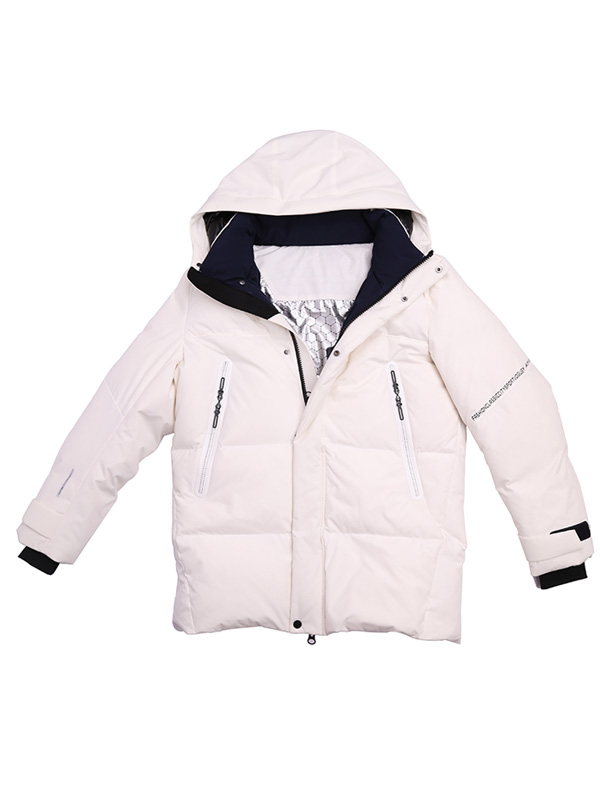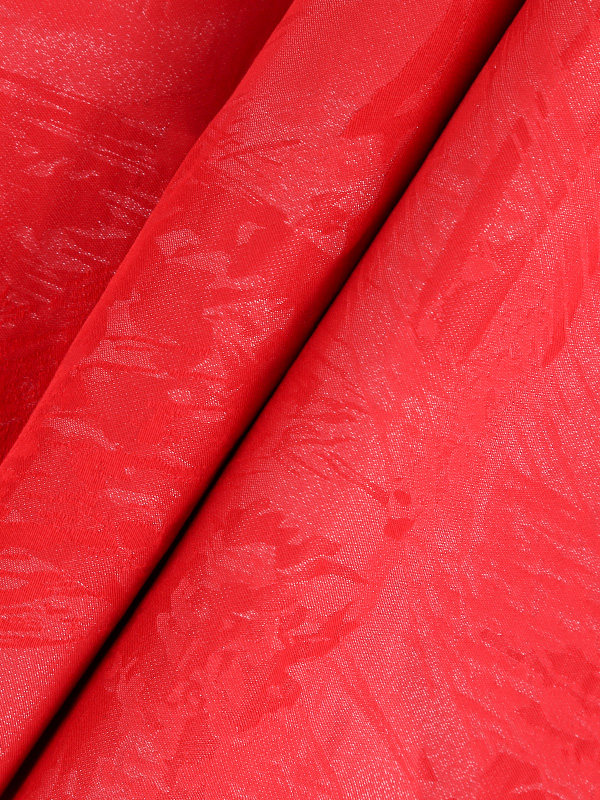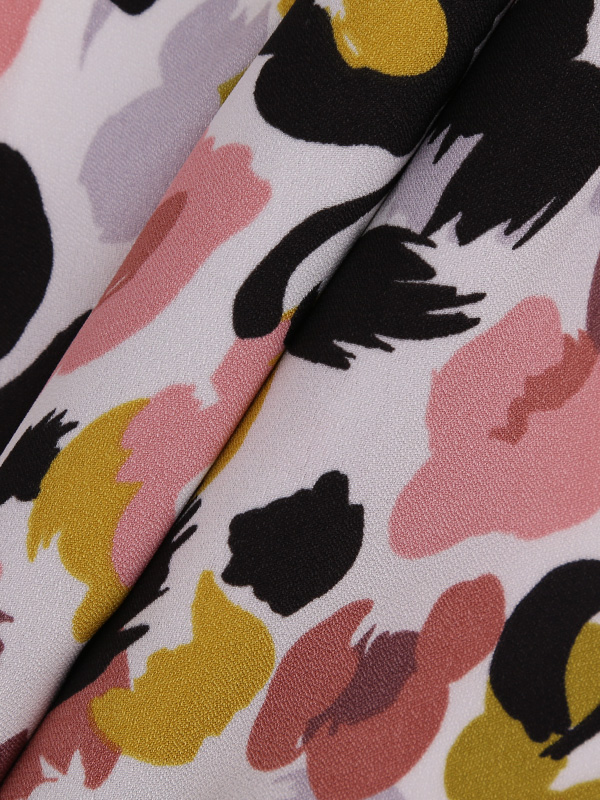Judgment of the Quality of Outdoor Sports Apparel Fabrics
Although the types of outdoor sports are very wide, professional outdoor sports clothing such as assault suits are mainly aimed at alpine sports such as mountaineering and skiing. In addition to the requirements for the physical fitness and skills of the participants, outdoor sports also require outdoor clothing that can adapt to harsh weather and complex geographical environments to ensure the personal safety of athletes.
Although there is no essential difference between outdoor sports clothing and home clothing, due to the characteristics of outdoor and sports, the requirements for clothing are relatively strict and harsh: outdoor sports generate a lot of heat and sweat evaporates a lot, requiring good heat dissipation and ventilation performance of clothing It is inevitable to encounter wind, rain, snow and fog in the wild. Clothing must have a certain waterproof performance. Outdoor sports fabrics hope to reduce the load as much as possible, and clothing should be as light as possible. The wild wind is strong, the mountains are cold, and the windproof and warm performance requirements are high. Outdoor washing conditions are limited, and the clothing is antibacterial, deodorant and anti- Contamination requirements are high.
In field work, rock climbing and forestry, clothing requires good tensile and tear resistance... These performance requirements are very demanding from the perspective of textile technology, and even many indicators are contradictory. Any single natural or chemical fiber cannot meet these requirements, and these functions can only be achieved through the compounding of multiple fibers and multi-channel chemical finishing.
1. Warmth:
Although warmth retention is closely related to the thickness of the fabric, outdoor sports do not allow clothing to be too heavy, so it is necessary to keep warm and light to meet the special requirements of outdoor sports clothing. The most common method is to add special ceramic powders containing chromium oxide, magnesium oxide, zirconia and other special ceramic powders, especially nano-scale fine ceramic powders, into the spinning solution of synthetic fibers such as polyester, which can absorb visible light such as sunlight and convert it into It can also reflect the far-infrared rays emitted by the human body itself, so it has excellent thermal insulation and heat storage performance. Of course, far-infrared ceramic powder, binder and cross-linking agent can also be formulated into a finishing agent, the woven fabric can be coated, and then dried and baked to make the nano-ceramic powder adhere to the surface of the fabric and the yarn. between. This finishing agent emits far-infrared rays with a wavelength of 8~14μm, and also has health care functions such as antibacterial, deodorant, and blood circulation promotion.
In addition, according to the principle of bionics, referring to the structure of polar bear hair, the interior of the polyester fiber is made into a porous hollow shape, so that the fiber contains a lot of non-circulating air, and the outside is made into a spiral curl shape to maintain fluffy, which can ensure the lightness of the texture. It has a good thermal insulation effect. Of course, it is also one of the most traditional measures to keep warm by making clothes and even fabrics into two layers or even three layers to increase the number of non-circulating air layers.
2. Waterproof and moisture permeability:
Sports will emit a lot of sweat, and outdoor weather will inevitably encounter wind and rain. This is a contradiction in itself: it must be able to prevent rain and snow from being soaked, and it must be able to discharge the sweat from the body in time. Fortunately, the human body emits water vapor in a single-molecule state, while rain and snow are liquid water droplets in an aggregated state, and their volume sizes are very different. In addition, liquid water has a property called surface tension, which is the property of gathering its own volume. The water we see on lotus leaves is granular water droplets rather than flat water spots. This is Because there is a layer of waxy hairy tissue on the surface of lotus leaves, water droplets cannot spread and penetrate on this layer of waxy hairs due to the effect of surface tension. If you dissolve a drop of detergent or washing powder into the water droplets, because the detergent can greatly reduce the surface tension of the liquid, the water droplets will immediately disintegrate and spread out on the lotus leaf. Waterproof and breathable clothing is to use the surface tension characteristics of water to coat the fabric with a layer of PTFE (the same chemical composition as the "king of corrosion-resistant fibers" polytetrafluoroethylene PTFE has the same chemical composition but different physical structure) to enhance the surface tension of the fabric. The chemical coating makes the water droplets tighten as much as possible without spreading and infiltrating the surface of the fabric, so that the pores on the fabric cannot be penetrated. At the same time, the coating is porous, and the water vapor in the single-molecule state can be smoothly emitted to the surface of the fabric through the capillary pores between the fibers.
If you stop and rest in the wild after a large amount of exercise, it is possible to form water droplets on the inner layer of the clothes because the outside temperature is low and the sweat cannot escape in time, which makes people feel very uncomfortable. condensation" phenomenon. There is a special moisture-permeable finishing process called "low condensation", which uses polyurethane (PU) and hydrophilic nano-ceramic powder to coat the fabric, which can absorb a lot of sweat when the body evaporates. More sweat vapor, thus avoiding the phenomenon that the water vapor inside the clothes exceeds the saturated vapor pressure and turns into water droplets.
In addition to finding solutions from fibers and coatings, the fabric structure can also try to absorb moisture and sweat. For example, a double-layer structure is adopted, the inner layer of the body is made of hydrophobic fibers, and the outer layer is made of hydrophilic fibers, so that sweat can be transferred from the skin to the inner layer fibers by capillary action, and then due to the hydrophilicity of the outer layer The binding force between fibers and water molecules is stronger than that of the inner hydrophobic fibers, and the water molecules are again transferred from the inner layer of the fabric to the outer layer, and finally released into the atmosphere.
3. Antibacterial and deodorant properties:
Due to the characteristics of exercise, sweat and sebaceous glands secrete a lot. In outdoor conditions, it is impossible to change clothes frequently. Under suitable temperature and humidity environment, microorganisms will multiply, causing indecent odors and itching. Therefore, regular outdoor sports clothing is chemically finished with antibacterial and deodorant. The way of finishing is generally to fix the organic quaternary amine type, imidazoline type surfactant or heavy metal ions such as silver and copper on the fiber through resin and cross-linking agent with bactericidal effect, so that it has a certain washing resistance. Of course, an important principle for choosing a fungicide must be non-toxic or low-toxic, otherwise it will be the last resort. In recent years, Japan has done a lot of research on natural antibacterial finishing agents. For example, aloe vera, mugwort, eucalyptus, rose and other aromatic oil extracts with bactericidal effects are used to encapsulate them in porous organic microcapsules or porous organic microcapsules. The ceramic powder is attached to the fabric, and is fixed by resin cross-linking, and the bactericide is slowly released through mechanical actions such as friction and backlog to achieve the purpose of durable antibacterial finishing. This kind of natural antibacterial agent is not only non-toxic and harmless, but also has certain health care functions, which should be the development direction of antibacterial finishing. However, due to the limited means of fixing the antibacterial agent, the washing resistance of the antibacterial agent is not good enough. The antibacterial performance of the antibacterial agent decreases every time it is washed, and generally disappears completely after dozens of times.

4. Antifouling and easy decontamination:
Outdoor sports often walk through the muddy and wet mountains and forests, and it is inevitable for the clothes to get dirty. This requires that the appearance of the clothes should not be stained by stains as much as possible, and once it is stained, it should be easy to wash and remove. Changing the surface properties of the fibers greatly increases the surface tension of the fabric, making it difficult for oil stains and other stains to penetrate into the fabric. Slight stains can be removed by wiping with a damp cloth, and heavier stains are also easy to clean. Antifouling finishing can not only prevent oil pollution, but also has the performance of waterproof and moisture permeability. Commonly used in the outer layer of clothing and the fabric finishing of backpacks, shoes, and tents.
5. Antistatic and anti-radiation finishing
Mountaineering is the core content of outdoor sports. In addition to the primitive jungle, the alpine plateau area above 3000 meters above sea level is generally dry due to low air pressure and easy volatilization of water. Outdoor clothing is basically made of chemical fiber fabrics, so static electricity The problem is more prominent. The hazards of static electricity are generally manifested in that clothes are prone to pilling, easily contaminated with dust and dirt, and there is electric shock and stickiness when close to the skin. If you carry sophisticated electronic instruments such as electronic compass, altimeter, GPS navigator, etc., it may be disturbed by the static electricity of clothing and cause errors, which will bring serious consequences.
Any object rubbing against each other may generate static electricity, but only dry insulating objects can accumulate static electricity and cause harm. Therefore, the best antistatic fabrics are of course made of natural fibers, but as mentioned above, pure natural fibers are difficult to meet the special requirements of outdoor sports, and even natural fibers will suffer from lack of water molecules in a very dry environment. resulting in static electricity. There are two main ways of antistatic finishing of fabrics: one is to simply weave metal wires into the fabric to make conductive fabrics (also electromagnetic wave shielding fabrics and anti-radiation fabrics), and conduct static electricity generated by friction to the outside world in time. . But this kind of fabric is not suitable for sportswear, mainly because the softness is not good and it is not comfortable enough. Another method is to use block polyether, polyacrylate and other antistatic agents with hygroscopic effect to coat the surface of the fabric with a chemical film that can absorb water molecules, so that a continuous conductive water film is formed on the surface of the fabric. Dissipate static electricity.
Due to the relatively thin atmosphere in high-altitude areas, the blocking and filtering effect of ultraviolet rays is greatly reduced, and the intensity of ultraviolet rays is much higher than that in low-altitude areas. Ultraviolet rays can effectively promote the production of vitamins and have a bactericidal effect, but excessively strong irradiation will cause damage to human skin. The penetrating power of ultraviolet rays is very strong, and general fiber fabrics cannot completely shield its irradiation. The nano-scale inorganic titanium dioxide (TiO2), nano-zinc oxide (ZnO) and other ultraviolet shielding agents and organic salicylic acid, cyanoacrylate, benzophenone, benzotriazole and other ultraviolet absorbers, using resin The method of cross-linking is fixed on the fabric, which can play a certain role in radiation protection.
It can be said that outdoor sportswear represents the latest cutting-edge technology in the development of textile science today, which is also an important reason why a seemingly inconspicuous mountaineering suit and trousers can easily cost hundreds of thousands or even thousands of dollars (of course it is not excluded). factors such as brand value and functional style). Although the price is indeed not low, a set of professional outdoor sports clothing that integrates windproof, breathable, moisture-proof, warm, radiation-proof and other properties may sometimes have the same meaning as life for a mountaineer! However, due to the diversity, complexity and unpredictability of outdoor sports, there may be many completely different requirements for the function of clothing due to different environments and sports methods. Therefore, in terms of current science and technology, outdoor sports clothing The overall performance is still difficult to achieve perfection in every aspect.


 English
English Chinese
Chinese



